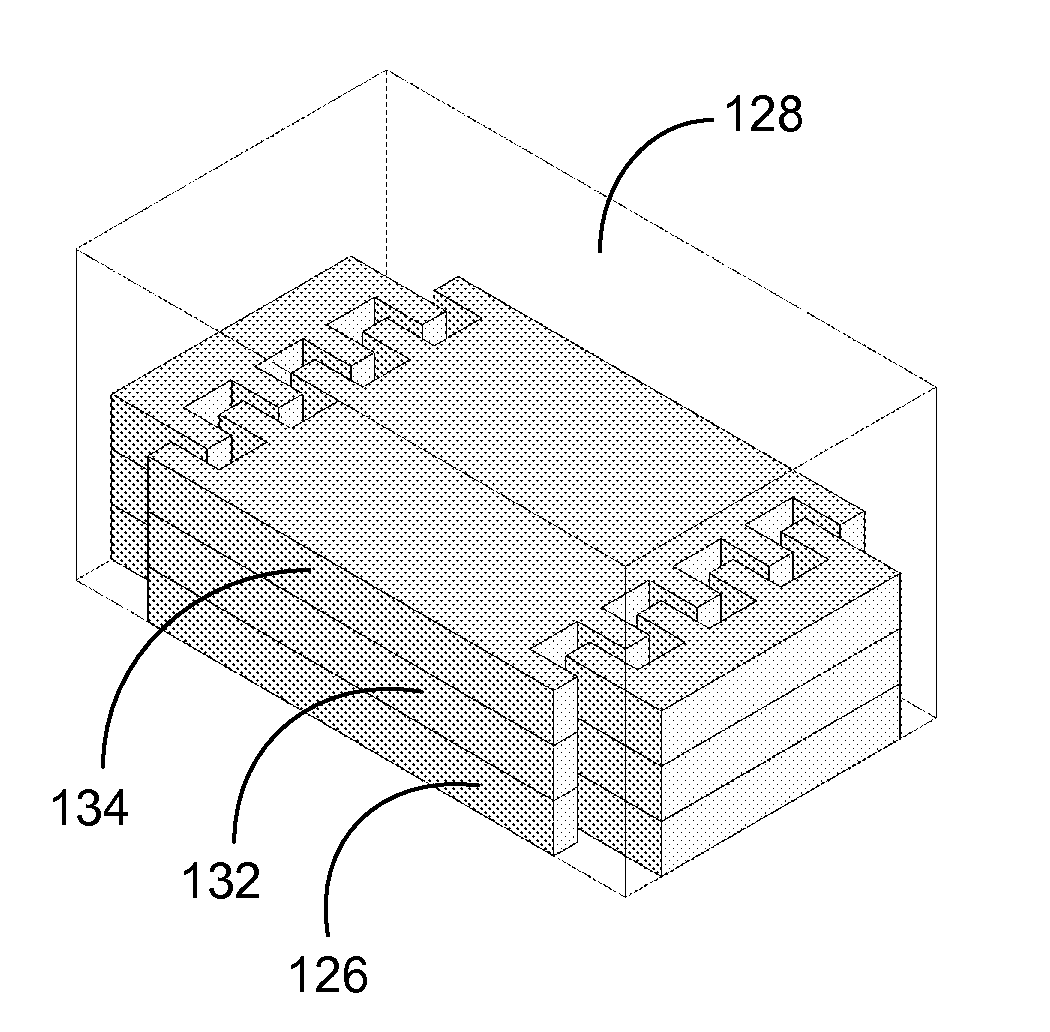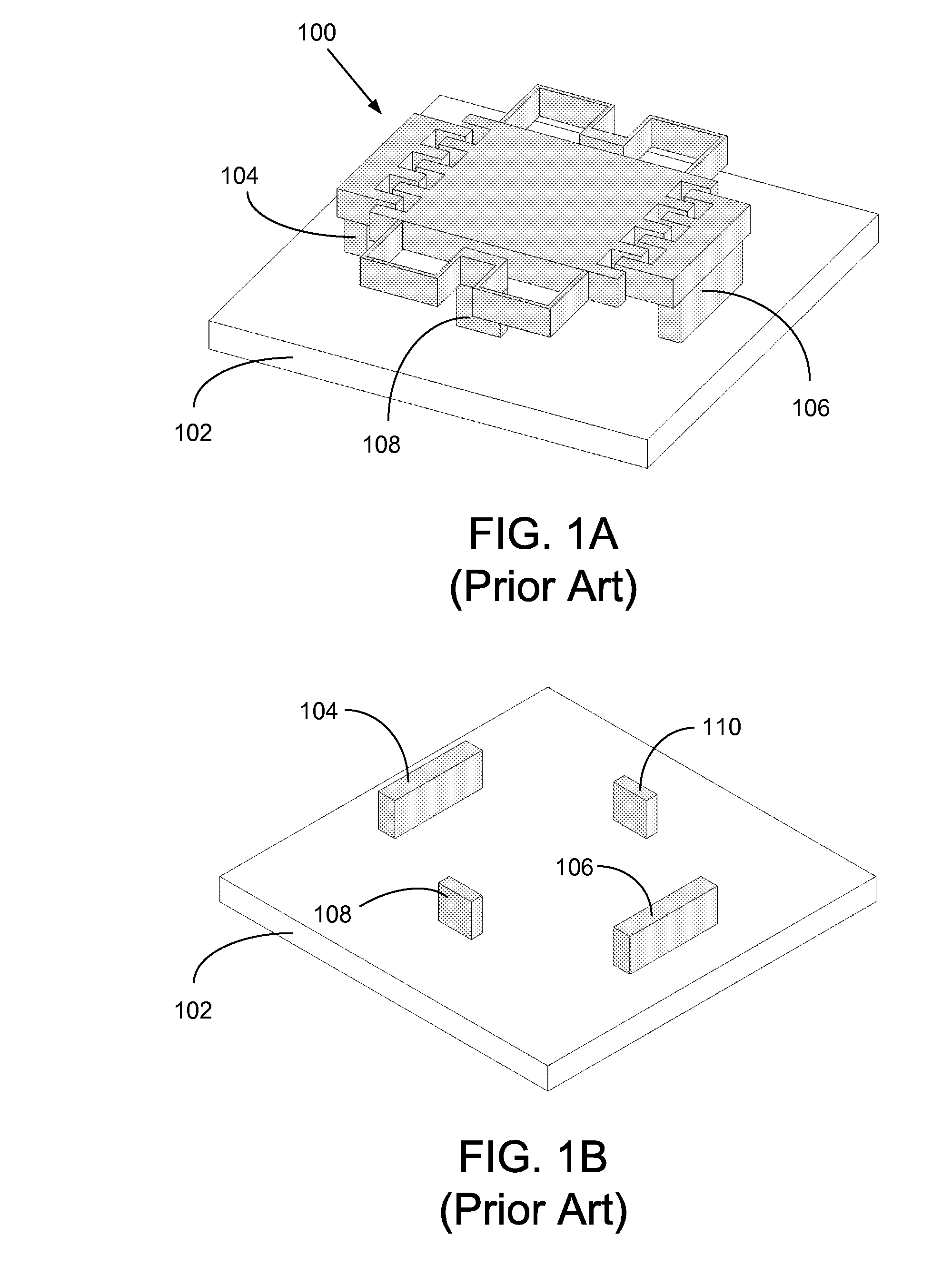Multi-layer micro-energy harvester and method of making the same
a multi-layer, energy harvester technology, applied in the direction of electrostatic generators/motors, influence generators, electrical apparatus, etc., can solve the problems of drie not being a three-dimensional (3-d) fabrication process, limiting the space of a micro-harvester, and reducing the efficiency of the process, so as to achieve the effect of simple and repetitive steps
- Summary
- Abstract
- Description
- Claims
- Application Information
AI Technical Summary
Benefits of technology
Problems solved by technology
Method used
Image
Examples
first embodiment
[0057]FIG. 5 schematically illustrates a perspective view of a multi-layer electrostatic energy harvester structure 143 that comprises three bonded variable capacitor layers 144 (top), 146 (middle), and 148 (bottom). In this embodiment, The three capacitor layers are made essentially of silicon. The three capacitor layer structures are essentially identical. Each capacitor layer comprises two fixed finger electrodes, one movable finger electrode (also as a moving mass), and two spring structures that are not shown and may have the spring structures shown in FIG. 1. Fixed electrodes 150, 152, 154, 156, 158, and 160 are for the capacitor layers 144, 146, and 148, respectively. Movable electrodes 162, 164, and 166 are for the capacitor layers 144, 146, and 148, respectively. Each movable electrode has two sets of fingers which form two variable comb capacitors with the two fixed electrodes on each capacitor layer. The fingers of each comb capacitor are arranged to be interdigitated. In...
third embodiment
[0067]FIG. 11 schematically illustrates a multi-layer electrostatic energy harvester structure 250 that comprises two separate variable capacitor layers 252 and 254. The capacitor layer 252 is above the capacitor layer 254. Their orientation is essentially orthogonal. These two capacitor layers are independent and do not have mechanical connections between them. The structure 250 can be viewed as a combination of two independent single-layer energy harvester structures that have similar structures to the single-layer structure 100 in FIG. 1. Both capacitor layers are made essentially of silicon. Each of the capacitor layers is anchored to a substrate (not shown) via anchor components (partially shown). Spring structures of both capacitor layers are not shown in FIG. 11 and may have the same spring structures shown in FIG. 1. The spring structures are also anchored to the substrate via anchor components (not shown and may refer to FIGS. 1A-1B). Again, their spring structures may be d...
PUM
 Login to View More
Login to View More Abstract
Description
Claims
Application Information
 Login to View More
Login to View More - R&D
- Intellectual Property
- Life Sciences
- Materials
- Tech Scout
- Unparalleled Data Quality
- Higher Quality Content
- 60% Fewer Hallucinations
Browse by: Latest US Patents, China's latest patents, Technical Efficacy Thesaurus, Application Domain, Technology Topic, Popular Technical Reports.
© 2025 PatSnap. All rights reserved.Legal|Privacy policy|Modern Slavery Act Transparency Statement|Sitemap|About US| Contact US: help@patsnap.com



